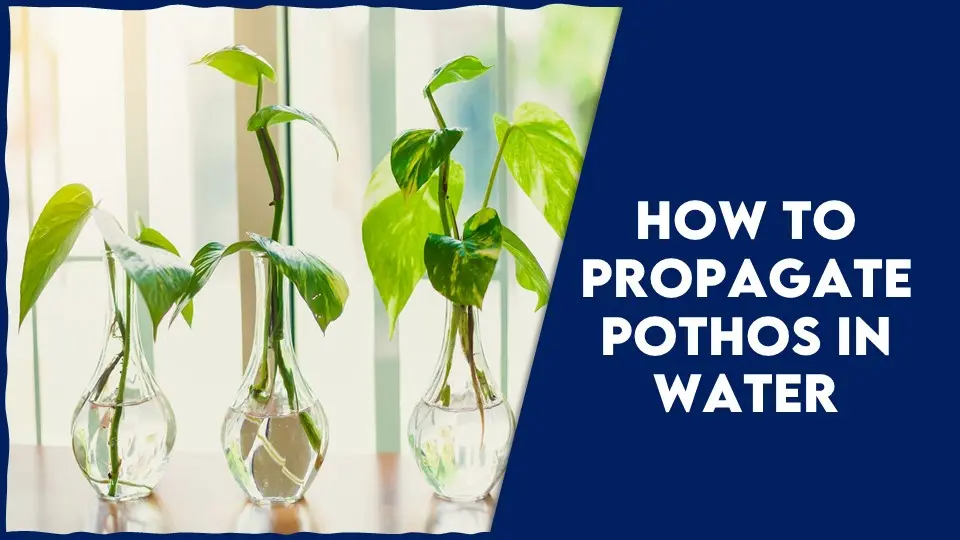How To Propagate Pothos In Water – Complete Scientific Guide
Pothos is popularly known to everyone by the name Money Plant. With its heart-shaped leaves and trailing vines, pothos adds a touch of greenery to any space, whether it’s a brightly lit office or a cozy living room corner. One of the most exciting aspects of pothos is its ability to propagate easily, allowing plant enthusiasts to expand their collection or share the joy of gardening with friends and family. Among the various propagation methods available to plant lovers, water propagation stands out as a particularly accessible and visually rewarding technique.
Propagating this plant with the help of root cuttings by using water as a medium will not only help in new growth but also fasten the root development. In this article, we shall know how to propagate pothos in water in a step by step manner starting from the right selection of cuttings to transferring them into the soil until it is properly adapted and established. By following the mentioned guidelines, each individual will be perfectly able to propagate their pothos and enjoy the scenic beauty offered by the green lush pothos thriving in your indoor space. In this article, you will get to know about how to propagate pothos in water.
Types of Pothos
Golden Pothos
The scientific name is Epipremnum aureum ‘Golden’. This is perhaps the most well-known and widely cultivated variety of pothos. The leaves of this species are heart-shaped which further has green foliage that is glossy and comes in variegated forms with a fusion of green and yellow colors. Golden pothos is primarily known for its ability to withstand and thrive in indirect sunlight often preferring low light conditions.
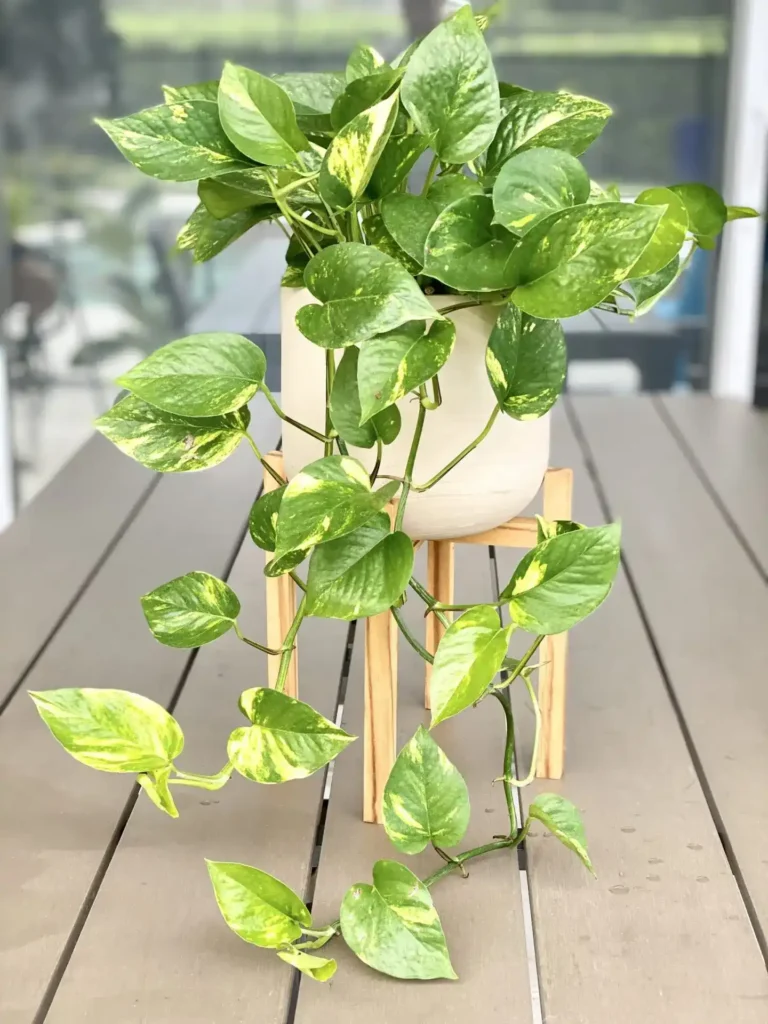
Marble Queen Pothos
The scientific name is Epipremnum aureum ‘Marble Queen’. This species of money plant is known for its variegated pattern of leaf colors which come in combinations of green, lemon yellow, and cream Marble Queen pothos adds a touch of elegance to any indoor space and prefers bright, indirect light to maintain its vibrant coloration.
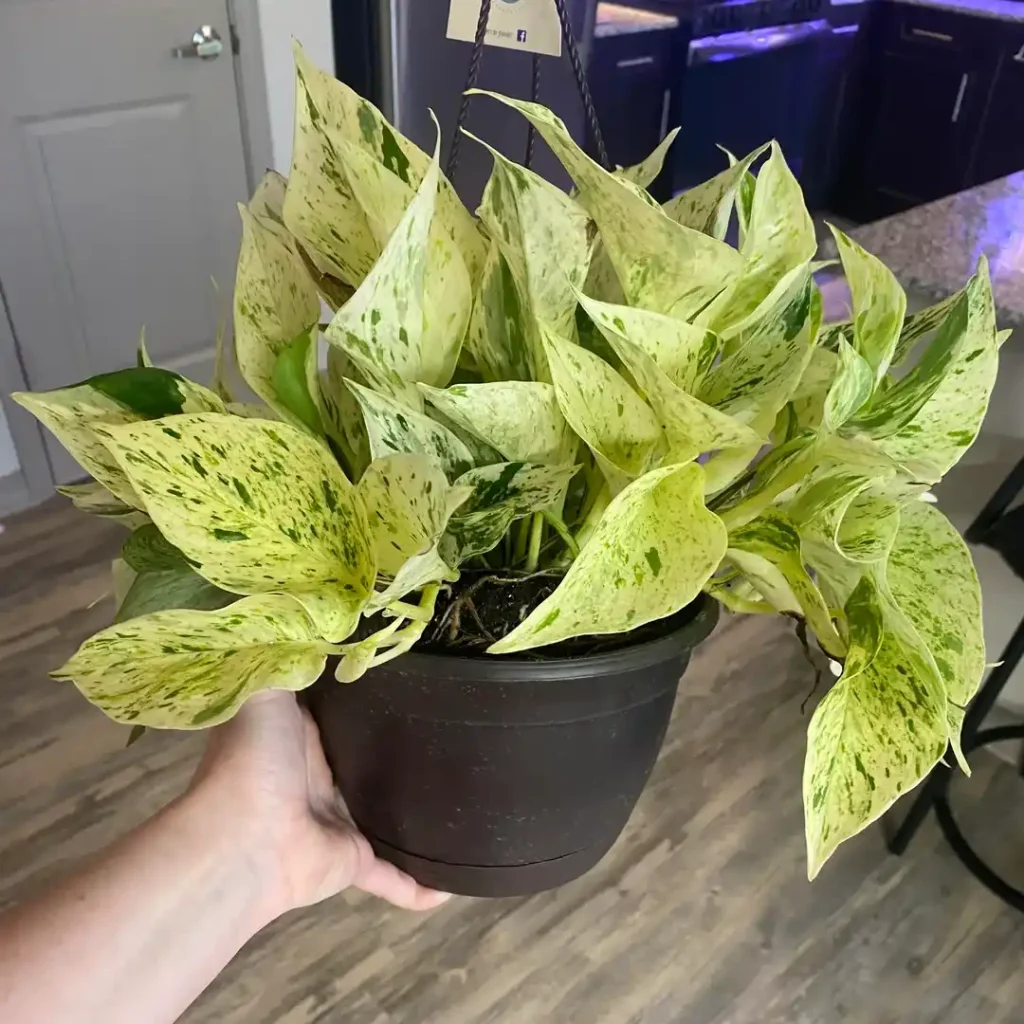
Neon Pothos
The scientific name of this species is Epipremnum aureum ‘Neon’. As the name suggests, Neon pothos feature vibrant, fluorescent green leaves that stand out in any room. This species is known for its excellent color variant of the foliage which makes it a popular choice for traditional and contemporary decors. Neon pothos thrive in moderate to bright indirect light and require regular watering to keep their soil consistently moist.

Jade Pothos
The scientific name of Jade pothos is Epipremnum aureum ‘Jade’. Jade pothos is distinguished by its rich, deep green foliage, which lacks the variegation seen in other cultivars. This species of money plant grows vigorously and can adapt to wide environmental conditions which makes it versatile and the perfect choice for indoor conditions. Jade pothos are easy to care for and can quickly trail or climb if provided with adequate support.
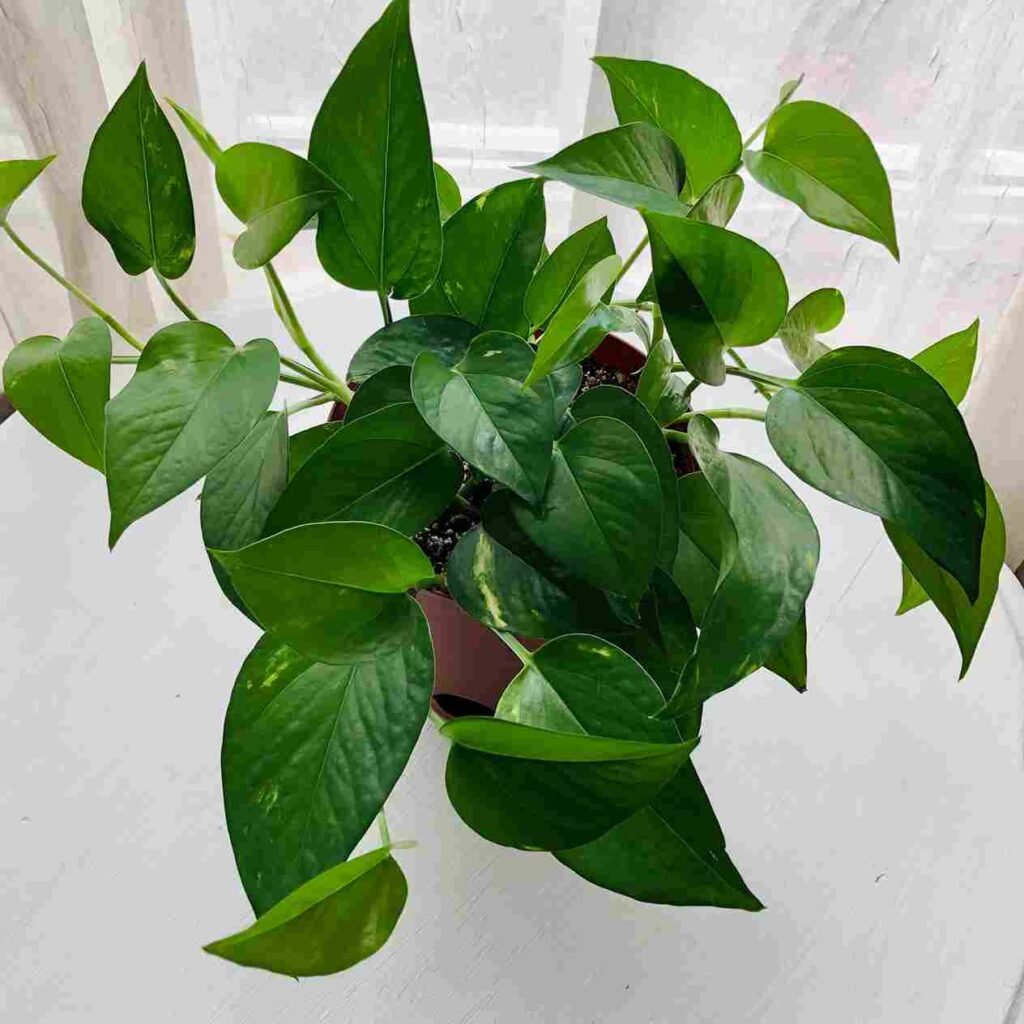
Manjula Pothos
The scientific name of Manjula pothos is Epipremnum aureum ‘Manjula’.This is one of the new species introduced to the money plant family and has unique and stunning foliage.
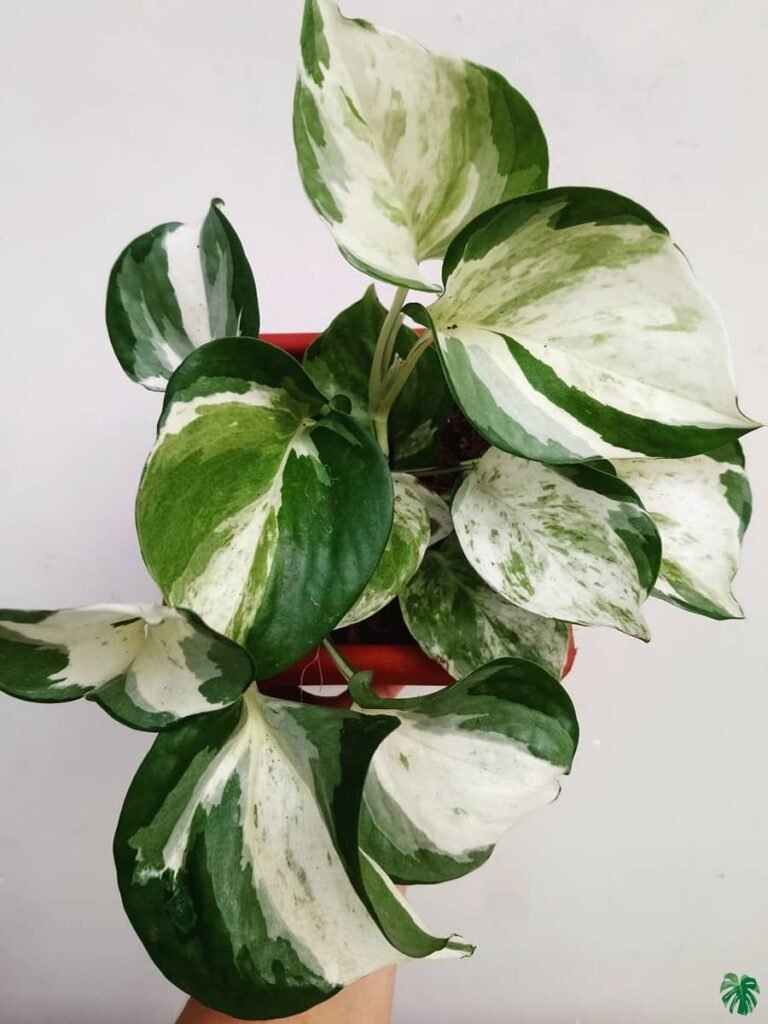
Pearls and Jade Pothos
The scientific name is Epipremnum aureum ‘Pearls and Jade’. As the name indicates, this species has a unique color combination of white resembling pearls and green resembling jade. It has very compact growth and is a perfect choice for hanging baskets.
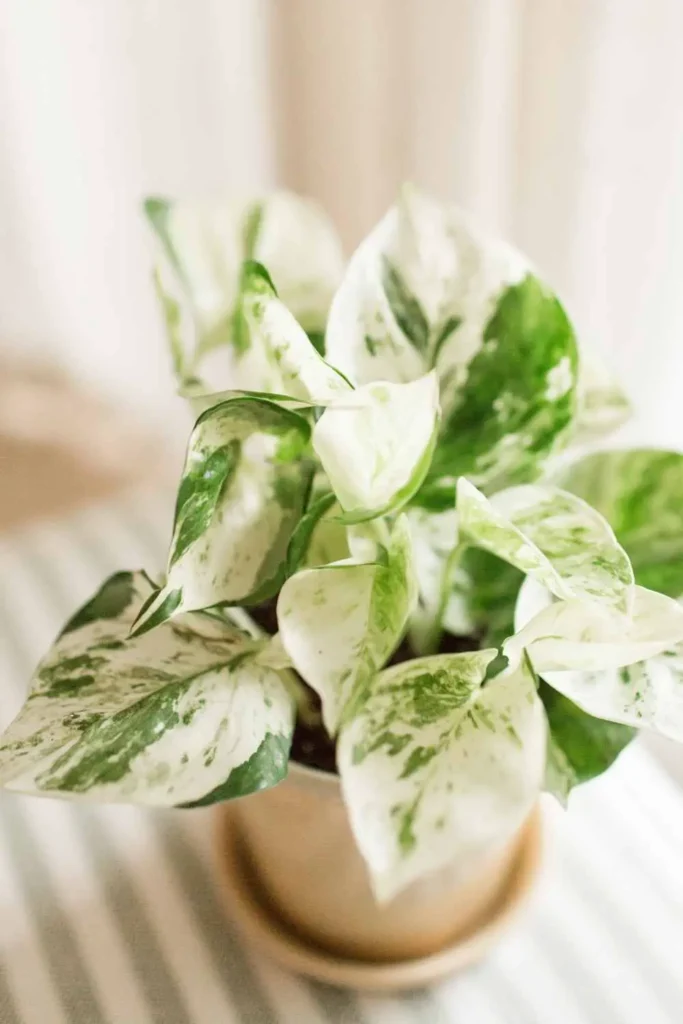
How to Propagate Pothos in Water
Step 1
- Before you begin propagating your pothos, gather the necessary supplies:
- Pothos plant – Select a healthy pothos plant from which to take cuttings.
- Pruning shears or a sharp knife – Use clean, sharp tools to take cuttings to ensure a smooth, healthy propagation process.
- Clean, clear glass or container – Choose a vessel that allows you to easily observe root growth. Clear glass jars or containers work well.
- Freshwater – Use room temperature tap water or filtered water. Avoid using water that is too cold or too hot, as extreme temperatures can shock the cuttings.
Step 2
Identify a healthy stem on your pothos plant from which to take cuttings. Using pruning shears or a sharp knife, cut a section of the stem that is 4-6 inches long. Make sure the cutting has at least two leaves and one node—the point on the stem where a leaf grows. To get healthy root development, nodes are essential
Step 3
Remove any leaves from the lower portion of the cutting, leaving at least two leaves at the top. Trim the cutting just below a node at a 45-degree angle. This angle has more surface area for proper and efficient root growth.
Step 4
Place Cutting in Water. Fill your glass or container with room-temperature water. Place the cutting in the water, ensuring that the cut end is submerged while the leaves remain above the waterline. Position the container in a location with indirect sunlight.
Step 5
Check the water level regularly and replenish it as needed to keep the cutting submerged. Change the water every 1-2 weeks to prevent stagnation and ensure optimal root growth. You may also notice roots beginning to form after a few weeks.
Step 6
Once the cutting has developed a healthy root system (typically after 4-6 weeks), it is ready to be transferred to soil. Prepare a small pot with a well-draining potting mix and plant the rooted cutting, covering the roots with soil. Water the newly potted cutting thoroughly and place it in a location with indirect sunlight.
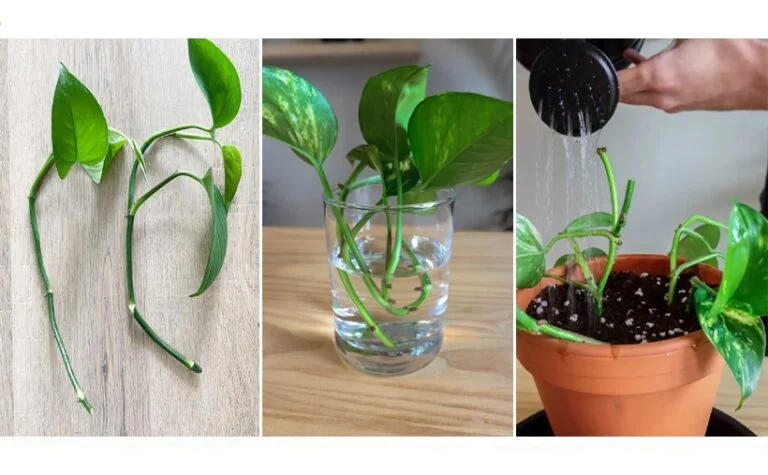
How long does it take to propagate pothos in water?
Immediately after knowing the entire propagation technique, a question strikes your mind. How long to propagate pothos in water? It depends on various factors like prevailing conditions of the environment, the health status of the cuttings, and also ultimately of species selected for propagation. Generally, you can expect to see roots developing within a few weeks, typically ranging from 2 to 6 weeks. However, some cuttings may root faster, while others may take a bit longer.
It’s essential to be patient during the propagation process and to provide optimal conditions for root growth, such as placing the cutting in a well-lit area with indirect sunlight and changing the water regularly to prevent stagnation. Additionally, it is crucial to maintain consistent warmth and humidity which can enhance the overall process of root initiation and further development. It requires some patience to propagate money plants in water. But, this is for sure a rewarding process that would yield good results within a week or two.
How To Propagate Golden Pothos In Water?
The propagation method with root cuttings using water as a media would be the same for any other species. The above-mentioned technique is for golden pothos species.
How To Propagate Neon Pothos In Water?
Prepare your Cutting
Using clean, sharp scissors or pruning shears, cut a healthy stem from a mature neon pothos plant. Make sure the cutting is around 4-6 inches long and has at least two leaves. Trim the stem just below a node, which is where the leaves emerge.
Remove Lower Leaves
Remove the lower leaves from the cutting, leaving a few leaves at the top intact. This would prevent the submergence of the leaves thereby preventing leaf decay.
Place in Water
Fill a clean jar or glass with room-temperature water. Submerge the bottom end of the cutting in the water, making sure that at least one or two nodes are submerged. You can use a clear container to monitor root growth easily.
Provide Optimal Conditions
Place the jar or glass in a location with bright, indirect sunlight. Avoid placing it in direct sunlight, as this could overheat the water or cause the cutting to wilt. Maintain a consistent room temperature, ideally between 65-85°F (18-29°C).
Change the Water
Every few days, check the water level and quality. If the water becomes cloudy or starts to smell foul, replace it with fresh room temperature water. By regular changes, the growth of algae or bacteria can be avoided
Monitor Root Growth
Over the next few weeks, you should start to see roots forming from the nodes of the cutting. Initially, these roots may appear small and white.
Transplanting
Once the roots are a few inches long and well-established, you can transplant the cutting into potting soil. Choose a well-draining potting mix and plant the cutting at the same depth it was submerged in the water. Keep the soil consistently moist but not waterlogged, and continue to provide bright, indirect sunlight.
Conclusion
Propagating money plants in water is an easy and simple yet rewarding method that can add up your plant collection which in turn enhances the beauty of the indoor environment. In this article, we have experienced the detailed step-by-step process of the propagation of money plants. Starting from the selection of cuttings to caring for them till the root development has been discussed. The reason to opt for propagation of pothos using water is that it is easy to propagate and accessible to everyone. The growth of roots can be properly witnessed and experienced.
By following the guidelines mentioned above, one can succeed in this propagation method be it a beginner or experienced gardener. If you are someone who is looking to increase the count of pothos through easy techniques without incurring any costs, this would be the perfect technique. Now, when someone asks you how to propagate a pothos in water, you should be able to answer it perfectly. This is the easiest and most convenient method of propagation. What is stopping you from starting? Go, grab your equipment and a healthy cutting, and begin the plant journey.

